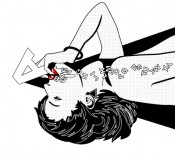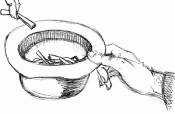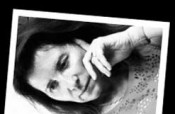Author: DasUnbehagen
Angelo Villa: Hystericization and Psychoanalytic Belonging
“For belonging does entail an identification; I suggest that the turning point must be made through the difference between a passive identification and an active one. As far as the analysis delves into a familial bond, it allows the patient to return and find a new place in his personal history; a different place from where he had been placed by his symptom, along with those symptoms belongi...
Patricia Gherovici: Attack of the Difficult Ecrits – Class 2 – The Situation of Psychoanalysis
This class was based on a collaborative annotated reading by Patricia Gherovici and Manya Steinkoler of Lacan’s “The Situation of Psychoanalysis and the Training of Psychoanalysts in 1956,” to be published in the forthcoming Reading the Écrits – A Guide to Lacan’s Works, edited by Derek Hook, Calum Neill, and Stijn Vanheule. The following is an excerpt from this forthcoming volume, posted he...
Jamieson Webster: Attack of the Difficult Ecrits – Class I – Variations on the Standard Treatment
A poetic rendition by Cecilia Wu If we follow Jamieson’s lead and focus on the writing itself, considering the fact that Lacan’s writings are unsweetened, condensed transcripts of his speech acts, it’s hard to dismiss his mode of attack as a pain in the ass, or as unruly hunks of raw hide to be adorned with the transferential ornaments of infantile hate. Lacan himself counsels ag...
Gerard Pommier: What Did Feminism and Gender Studies Bring to Psychoanalysis?
In his presentation to Das Unbehagen, Gerard Pommier addressed the challenge of defining the term ‘Woman’: “The uncertainty is such that this difficulty of definition could be used itself as a definition and normative ideal! Judith Butler writes, for instance, that “if a subject unique to feminism remains to be constructed, it would be even more realistic to abandon such a projec...
Elissa Marder: Knock Knock: Femininity, Fixation, Photography
“Ultimately, what I am seeking in the photograph taken of me (the ‘intention’ according to which I look at it) is Death: Death is the eidos of that Photograph. Hence, strangely, the only thing that I tolerate, that I like, that is familiar to me, when I am photographed, is the sound of the camera. For me, the Photographer’s organ is not his eye (which terrifies me) but his finger: what is li...
Jamieson Webster: The Accidents of Psychoanalysis – New York Times Couch
“In the aftermath of what we shrinks call “August” — a euphemism for the acute clinical moments that our patients experience while we’re away for the standard three to five weeks of vacation — I found myself reflecting on a series of physical accidents that befell too many of my patients during my break not to note. If two patients fall down stairs, another is involved in a pedestrian accide...
Cecilia Wu: Reflections on Marcus Coelen’s Philological Psychoanalysis
Here are some notes, reflections and questions on Marcus Coelen, Hannah Wallerstein, and Jamieson Webster’s presentations and the conversations that followed: 1) The Lending of Material, and the Dance of Withholding – Marcus names the 3 compliances or plasticities of materiality of psychoanalysis: contingency, soma, and language. – To consider compliance not as conformity to the ...
Angelo Villa: Psychoanalysis and the Handicapped
“Over the last few years, definitions of handicaps and disabilities have multiplied themselves, either generating improbable neologisms or exploring language in search of an impossible formula which may combine the designation of a difference with its negation. The ensuing feeling of confusion has consequently increased. Words, the sea of words and of more or less politically correct linguis...
Patricia Gherovici: Two Fund(a)mental Concepts of Lacanian Psychoanalysis – A Course on The Phallus and object a
Can psychoanalysis rethink sexuality without fully relying on the controversial and contested notion of the phallus? The simplest, schematic version of the Freudian Oedipal model offers a binary logic of having or not having it, of presence or absence: boys have it, girls don’t. For Freud, castration is a loss that women think they have suffered and that men fear. For Lacan, the phallus is clearly...
Genevieve Morel: The Unsinkable Fantasy
“Because the symptom is a source of complaint, we speak about it in psychoanalysis, to get rid of it. To the contrary, fantasy is so enjoyable that there is no incentive to speak of it, as Freud had noticed. We would rather keep to ourselves this intimate and painless satisfaction. Yet, without addressing the fantasy, there is no hope for symptoms to give in, even though they appear to be al...
Marc Strauss: On Female Obsessional Neurosis
“What is the obsessional neurosis as such is not an easy question, because even the most characteristic symptom such as the ritual or the OCD, as it is called nowadays, belongs to the most different personalities. Lacan used the structural model because there is no symptom that would characterize one structure or clinical type. The diagnosis is based on the coherence of the whole that corres...
Jamieson Webster & David Lichtenstein: Jacques Lacan’s Return to Freud and Its Clinical Implications II
A common misconception concerning Jacques Lacan is that his work was inherently un-clinical— that he did not discuss clinical issues concerning technique or provide clinical cases—making him more of a philosopher or meta-theoretician. In this course, we hope to dispel this mischaracterization and begin with key clinical cases touched on by Lacan during his Seminars from 1952-1980, from Freud’s Lit...























